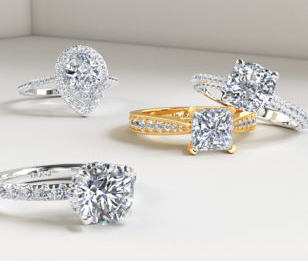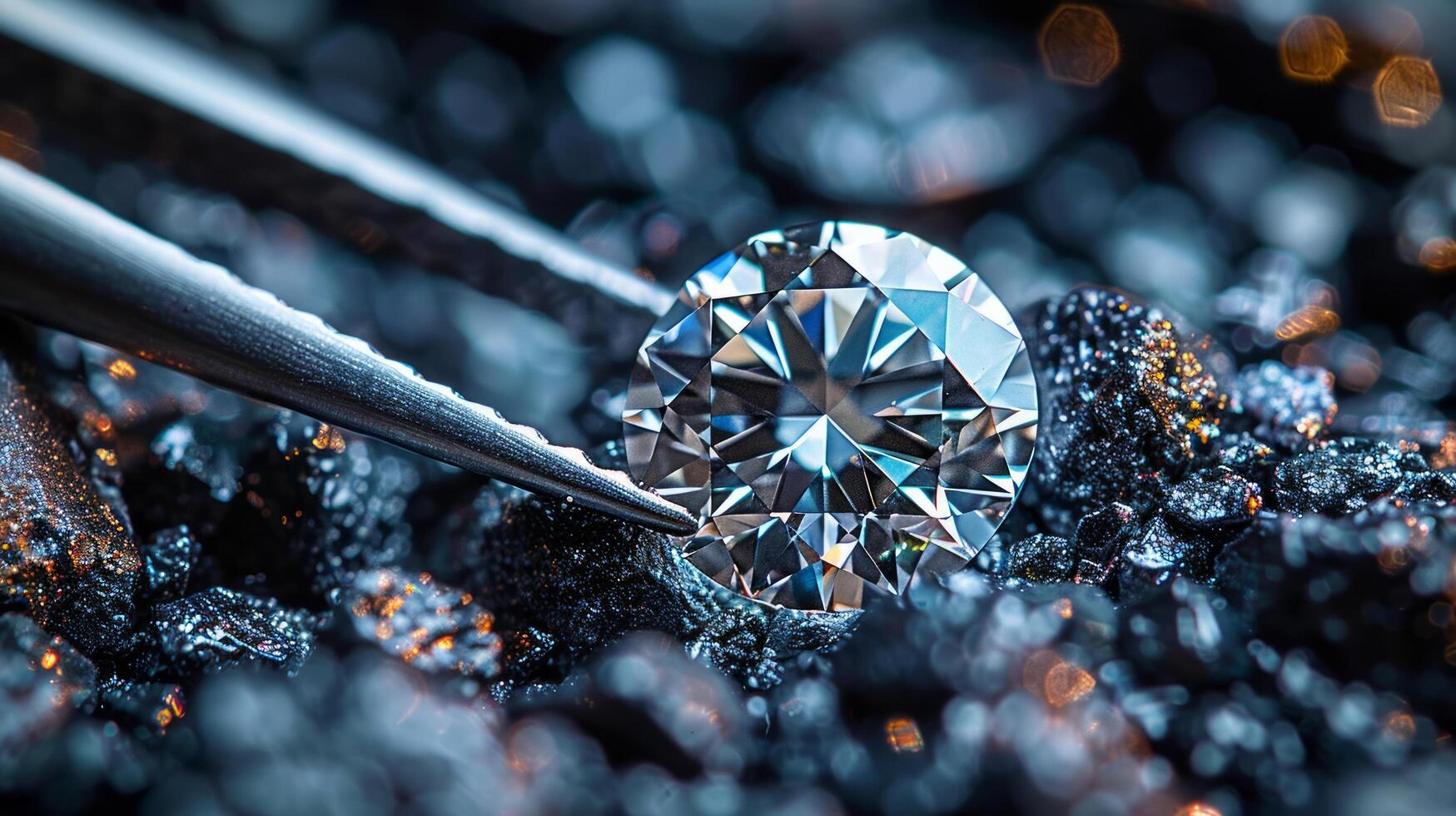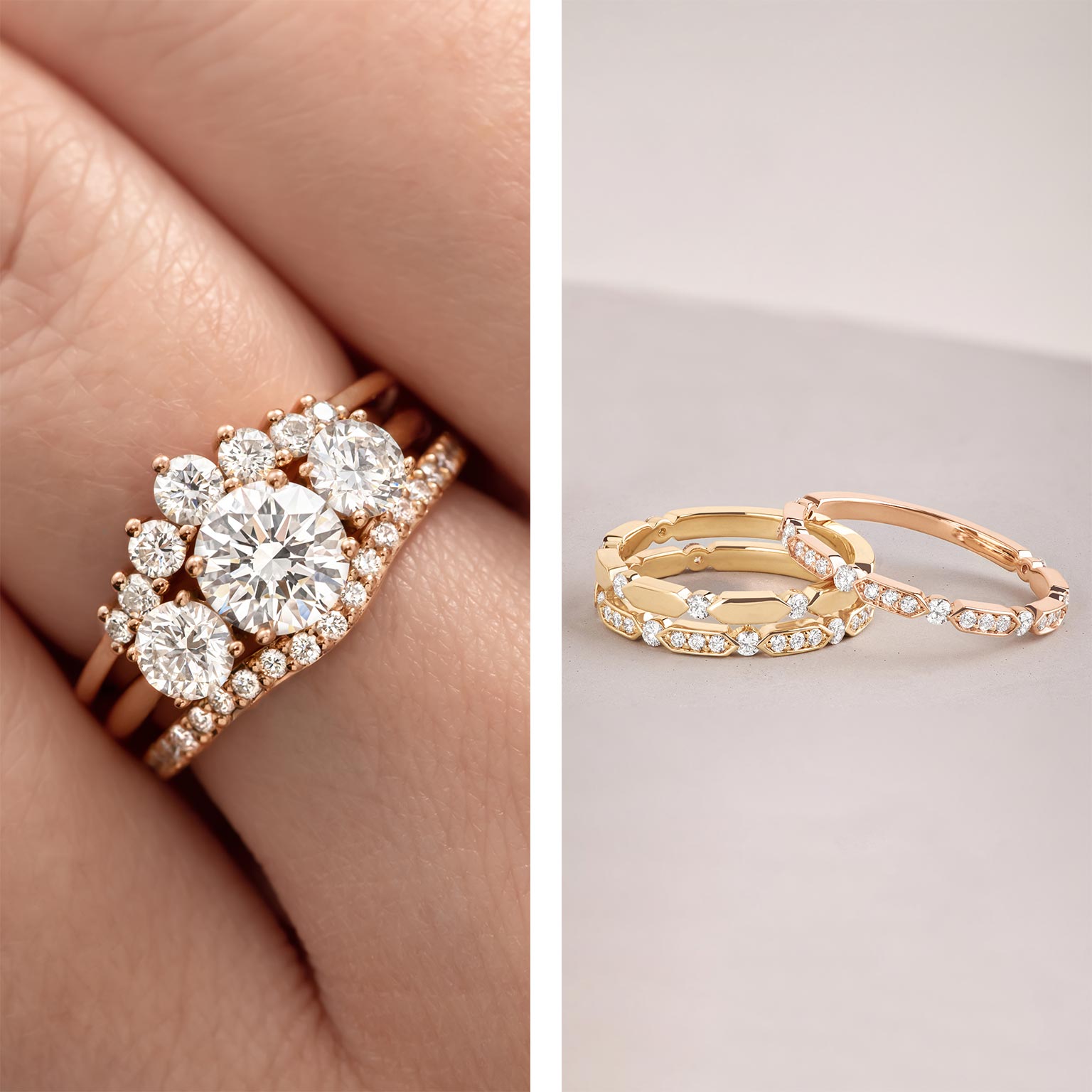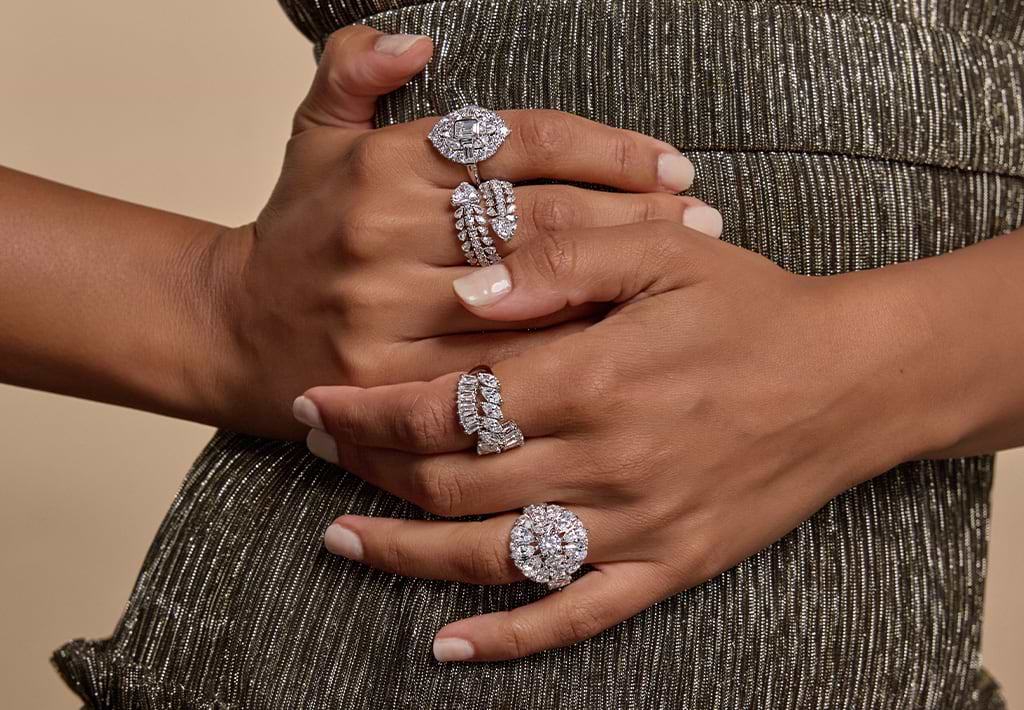When it comes to choosing the perfect ring to showcase your lab grown diamonds, the metal that holds the gem is just as important as the diamond itself. Among the most popular choices for lab diamond rings are platinum and gold. Both metals have their own unique qualities, and deciding between platinum vs gold lab diamond rings depends on factors like durability, appearance, budget, and lifestyle. In this article, we will explore the differences between platinum vs gold lab diamond rings to help you make an informed choice when pairing your stunning lab grown diamonds with the right metal.
Durability and Strength: Platinum vs Gold Lab Diamond Rings
One of the main considerations when choosing between platinum vs gold lab diamond rings is durability. Platinum is renowned for its incredible strength and resilience. It is a dense and heavy metal that provides excellent protection to lab grown diamonds, making it an ideal choice for those who want a ring that will withstand daily wear and tear.
On the other hand, gold, particularly in its pure form (24 karat), is softer than platinum. However, gold is typically alloyed with other metals to improve its strength, with 14 karat and 18 karat gold being the most common choices for lab diamond rings. While gold rings are durable enough for everyday use, they are more prone to scratches and wear compared to platinum. Therefore, if you prioritize long-lasting strength to protect your lab grown diamonds, platinum may have the edge over gold.
Appearance and Style Differences in Platinum vs Gold Lab Diamond Rings
When it comes to aesthetics, platinum and gold offer distinct looks that can complement lab grown diamonds in different ways. Platinum has a naturally bright white sheen that does not fade or tarnish over time. This silvery-white finish beautifully enhances the brilliance of lab diamonds, making the stones appear even more dazzling.
Gold, on the other hand, comes in a variety of colors, including classic yellow gold, romantic rose gold, and elegant white gold. Each gold tone provides a different style statement. Yellow gold gives a warm, traditional feel, while rose gold offers a trendy and romantic vibe. White gold, though similar in appearance to platinum, often has a slightly warmer tone and is coated with rhodium to maintain its brightness.
Choosing between platinum vs gold lab diamond rings ultimately depends on your personal style preferences and how you want your lab grown diamonds to be framed.
Cost Considerations: Platinum vs Gold Lab Diamond Rings
Price is a significant factor when deciding between platinum vs gold lab diamond rings. Platinum is generally more expensive than gold due to its rarity and density. Since platinum is heavier, more metal is required to craft a ring of the same size compared to gold, which adds to the cost.
Gold lab diamond rings come in a range of price points depending on the karat and color of gold selected. For example, 14 karat gold rings are typically more affordable than 18 karat gold rings. If budget is a major consideration, gold lab diamond rings can offer a luxurious look without the higher price tag of platinum.
However, it’s worth noting that because platinum is highly durable, it may save money in the long run by requiring less maintenance or replacement.
Maintenance and Longevity of Platinum vs Gold Lab Diamond Rings
Both platinum and gold lab diamond rings require some level of care to maintain their beauty. Platinum tends to develop a patina over time, which gives it a slightly matte finish that some people appreciate for its vintage look. However, platinum does not lose metal when scratched; instead, the metal is displaced, making the ring more dense and durable over time.
Gold, in contrast, can lose small amounts of metal with regular wear due to scratching. The rhodium plating on white gold rings may need to be reapplied every few years to keep the finish bright and white. Yellow and rose gold generally require polishing to maintain their shine.
Considering maintenance, platinum lab diamond rings often appeal to those who want a low-maintenance option that maintains its integrity, while gold lab diamond rings may need a bit more attention to keep their original appearance.
Hypoallergenic Qualities: Platinum vs Gold Lab Diamond Rings
For those with sensitive skin or allergies, platinum vs gold lab diamond rings differ in hypoallergenic properties. Platinum is naturally hypoallergenic, making it an excellent choice for people prone to allergic reactions or skin irritations.
Gold alloys, depending on their composition, may contain metals like nickel, which can cause allergies in some individuals. Rose gold and white gold often have different alloy mixes that may or may not be hypoallergenic. Therefore, if you have sensitive skin, platinum lab diamond rings are usually the safer and more comfortable option.
The Perfect Match for Your Lab Grown Diamonds
Lab grown diamonds are celebrated for their ethical production, brilliance, and quality. Choosing the right metal to pair with these stunning gems enhances their beauty and your enjoyment. Both platinum and gold lab diamond rings offer unique advantages.
If you desire unmatched durability, a natural white finish, and hypoallergenic properties, platinum lab diamond rings are the premium choice. Alternatively, if you prefer a variety of colors, a classic or trendy look, and more budget-friendly options, gold lab diamond rings may be the way to go.
Whichever you choose, lab grown diamonds shine brilliantly in both platinum and gold settings, allowing you to wear your ring with pride and confidence.





